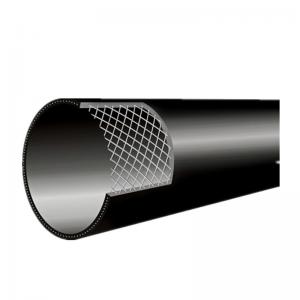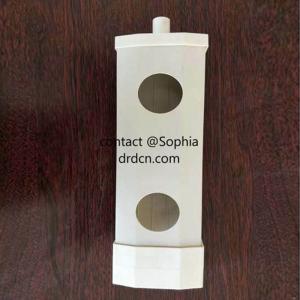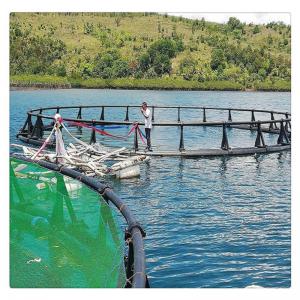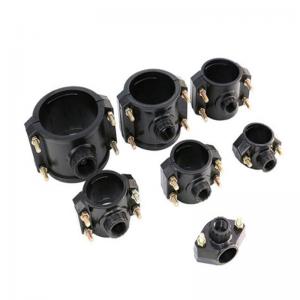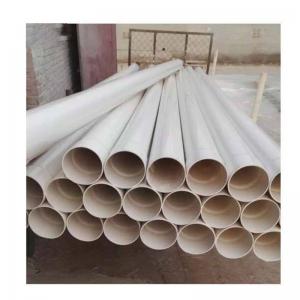Features:
1) Good sealing properties, chemical resistance, low construction cost
2) Protects and guides cable, instead of steel tube and cement tube
3) Strong, corrosion-resistant, high-temperature resistant
4) No need for cement protecting, low cost.
5)The inner layer silicon core is solid and permanent lubricant
6) The inner layer silicon core is being co-extrusion pressed into high-density polyethylene pipe , and evenly distributed throughout the pipe wall, not shed off, same lifespan with silicon tube
7) The inner layer silicon core and high-density polyethylene pipe have the same physical and mechanical properties;
8)The inner layer silicon core keeps the same friction characteristic,Cable in the pipe can be repeatedly extracted;
9) The inner layer silicon core does not react with water, can rinse with water after accident
Applications:
PLB Duct Pipes are used as underground cable conduits for optical fiber cables, communication cables etc. & are suitable for cable installation by blowing tor pulling by rope techniques.
HDPE Ducts are suitable for installation in the field dirt trenches, under sidewalks, roads, within communication networks, between communication centers and between cities. They can also be used in branch networks between cells, distribution cabinets, poles, in walls and within subterranean networks of homes, allowing the insertion of optical or copper communication cables, as well as TV/cable aluminium co-axial cables. Cables can be inserted in through the pipe by blowing, with an internal air-pressure up to eight bars.
Advantages:
1). Adopt multi-machine co-extrusion, the silicon core layer is synchronously embedded in the pipe. It will be permanent lubricated and not be stripped forever
2). The friction coefficient of the inner wall is very small. Optical cable (electric cable) can be repeatedly extracted and tension in the pipe.
3). Waterproof, damp-proof, can avoid the damage by rodent animals.
4). Aging-resistant, anti corrosion of chemicals, long service with 50 years
5). Good weather resistant ability, and its suitable temperature from -40°C to 100°C.
6). Convenient in construction, save time and the project cost
Product Paramenters
Material:
Permanently lubricated HPDE Telecom Ducts are manufactured with the superior grade of High-Density Polyethylene materials.
HDPE PIPES manufactured meets all the requirements of TEC Specifications as well as IS 4984-1995.
Lubrication:
Permanently lubricated HDPE Telecom Ducts have special lubricated compound on Inner Side for Conveying Optical Fiber cables with extremely low friction. Coefficient of Friction between the inside of the HDPE Duct and the outside of the inserted communication cable does not exceed 0.06. Properties of Lubricant are Its strongly locked into HDPE. It has same physical/mechanical properties as HDPE except low Coefficient of Friction value which is less than 0.06. Its evenly distributed around the bore and along the length of duct. Does not react with water, hence it is possible to clean the duct by water stream in case of any obstruction/accident. Have same frictional properties during life of the duct.
Additional Information:
* Port of Dispatch: Tianjin China
* Delivery Time: Available Ex-Stock
* Packaging Details: 500 Meters, 1000 Meters, 2000Meters
Butt Fusion Joint
The most widely used method for joining individual lengths of large diameter polyethylene pipe is by heat fusion of the pipe butt ends.This technique, which precludes the need for specially modified pipe ends or couplings, produces a permanent, economical and flow-efficient connection. Field-site butt fusions may be made readily by trained operators using specially developed butt fusion machines that secure and precisely align the pipe ends for the fusion process.
The six steps involved in making a butt fusion joint are:
1.Securely fasten the components to be joined
2.Face the pipe ends
3.Align the pipe profile
4.Melt the pipe interfaces
5.Join the two profiles together
6.Hold under pressure
Characteristics:
Environment Stress Crack Resistance (ESCR)
Impact Resistance
Crush Resistance
Low Coefficient of Friction
Temperature Resistance
Ultraviolet (UV) protection








